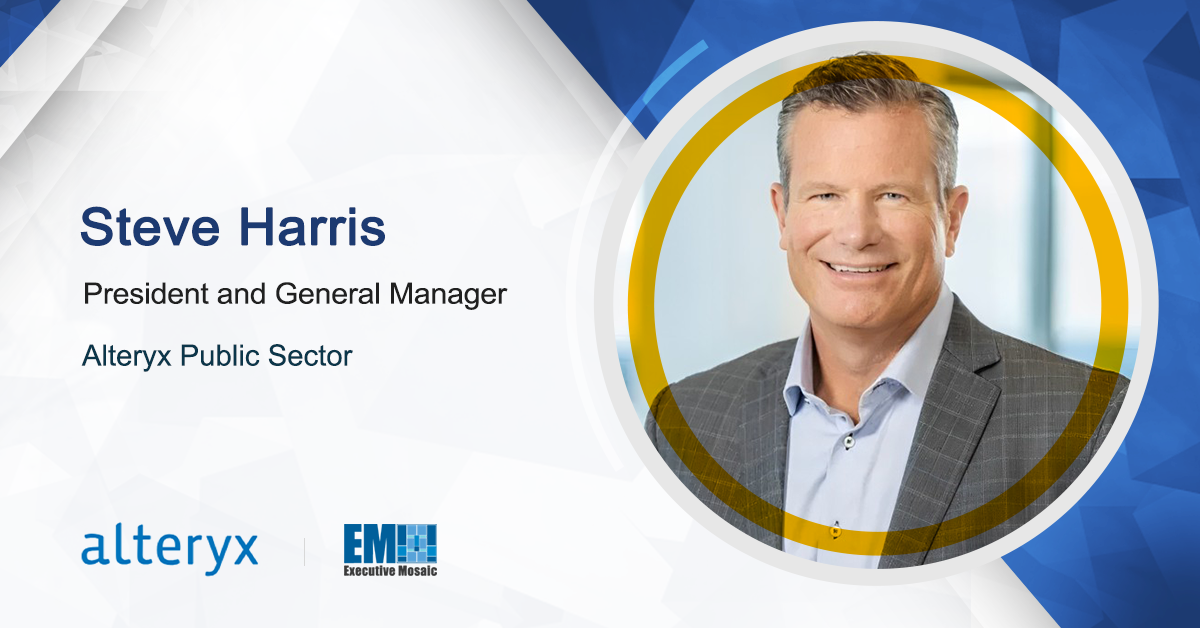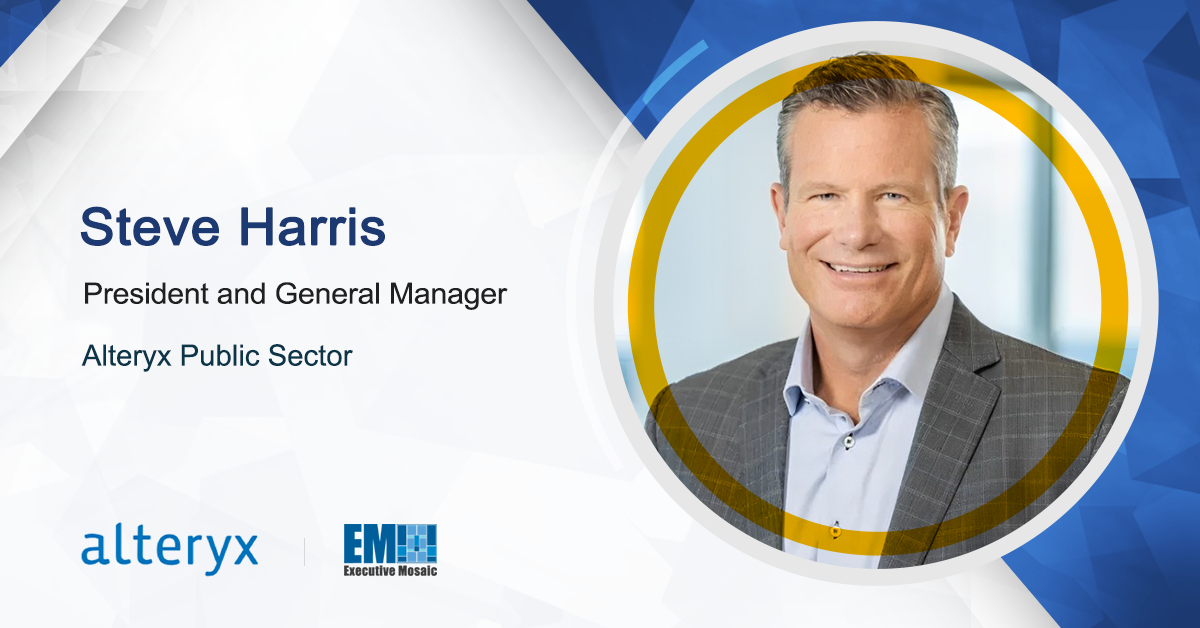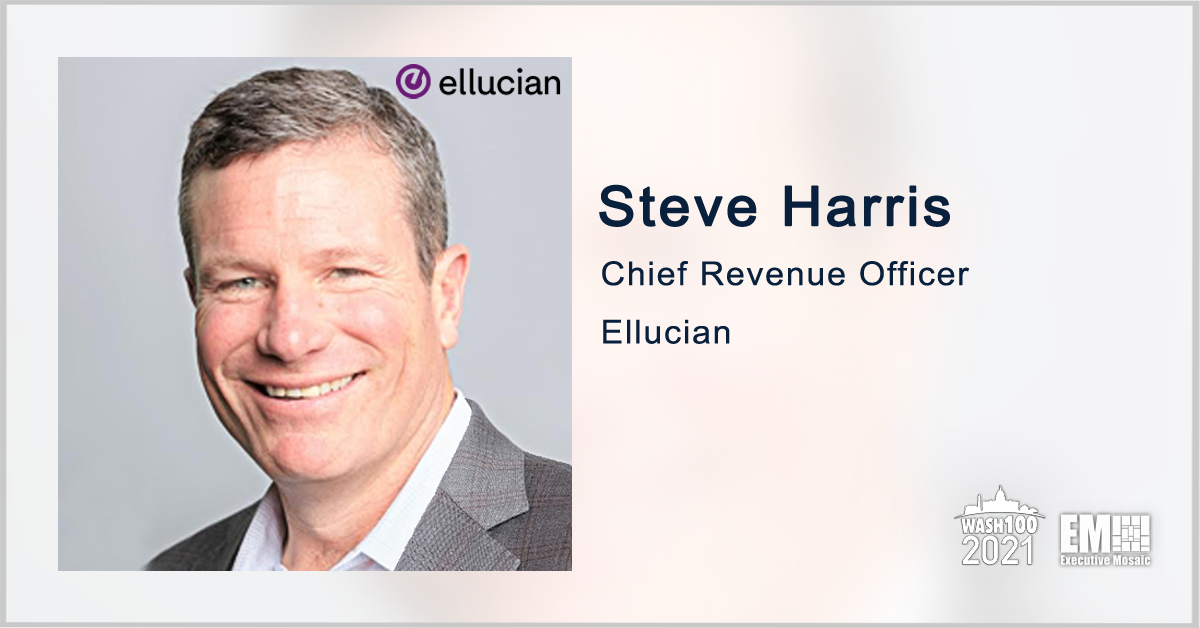At the end of 2023, Steve Harris became the president and general manager of the newly established public sector business unit at Alteryx, a data science and analytics tools provider in the GovCon market. Executive Mosaic recently sat down with Harris, a six-time Wash100 Award winner, to learn more about how artificial intelligence is shaping the data analytics industry and how Alteryx is embracing the technology.
Harris previously served as chief revenue officer for Ellucian, and prior to that role, he spent more than two decades at Dell Technologies. Read below for Harris’ full Executive Spotlight interview.
Tell me about the current state of the artificial intelligence market. Where are you seeing new opportunities in AI, and where do you think the market is heading?
There’s a tremendous amount of opportunity, and with that can come confusion. There’s a lot of curiosity and potential as well as risk. I like to compare it to the very early days of cloud, where the bad actors were scaling faster than cyber protection capabilities. It’s a huge emerging market. There’s a massive fragmentation of players.


What are some of the biggest opportunity areas you see with generative AI? How is Alteryx approaching that?
AI is when technology simulates the actions of a person, and it’s based on machine learning. Generative AI can actually produce content and emulate the way that a human would create content. That can create opportunity in a number of ways, and particularly, I see worthwhile uses in analytics.
Given that generative AI is only as good or is just as bad as the data that it’s applied to, Alteryx is in a terrific position with our entire AI Platform for Enterprise Analytics, where we help people understand incredibly complex data sets in a number of ways.
At Alteryx, we believe that analytics can empower all employees to make faster, more insightful and more confident decisions — regardless of technical skill level. Organizations can drive smarter, faster decisions and automate analytics to improve revenue performance, manage costs and mitigate risks across their organizations.
Alteryx AiDIN is the AI engine that powers the Alteryx AI platform, bringing enterprise-grade machine learning and generative AI for faster time to value, streamlined innovation, improved operations and enhanced governance.
We’re a leader in AI for analytics. Our platform is a leader in no-code, easy to use technology that allows users across the organization to turn data into insights. The generative AI that we build into our platform is incredibly useful because it’s very hard for people to understand their data without studying it for a long time. That’s where generative AI comes in and does that data study almost instantly. It’s applied to a quality data set, people’s own data and the third-party data that they choose to bring in as part of the reference. Generative AI has huge potential and has an equal amount of risk today.
What are some of the key challenges agencies face as they try to use their data for decision advantage or to better understand their organizations?
There are many silos of data. Alteryx is here to say that you don’t have to embark on any significant or large-scale data management projects in order to get data. We bring the analytics to the data — any kind of data, any place. The data never leaves your environment; we only take the data set from each source of data that is part of that query, and we make it extremely easy and understandable for a layman to get to an accurate, clean data set.
Then, because we are a no-code platform, we really attack that other major issue, which is making accessible technology available so that the people who are closest to the data have the power to transform that data, create business intelligence and bring data to decisions. These are the keys to the kingdom.
And on another note, this whole conversation is about a journey toward data literacy. Everybody likes to talk about the most exciting or interesting part of the journey — big model AI, generative AI, disparate data sets, merging data — but it’s all part of the journey towards data literacy for not only the staff and administrators of our agencies but also our citizenry.
U.S. citizens need to know when something they read online was produced by generative AI, because that could impact how much they trust what they’re seeing. If generative AI is producing the content on a government website, I no longer trust it because I have the data literacy to know that that generative AI could be taking information from sources that I don’t consider authoritative. Data literacy is a really important overarching topic.
Which other emerging technologies do you anticipate will have the greatest impact on the federal landscape in the next few years?
The truth is that the problems haven’t changed dramatically over the last three to five years. We’re still talking about JADC2, multi-domain command and control, cyber, cloud. Organizations are still concerned about where to put their data and their workloads. And we’re still talking about the lack of analytics and bringing data to decisions. I think the most disruptive technology is going to be the IT modernization of the legacy technology that exists across the spectrum of the federal government. We have really mature technologies that are highly addressable today that just are not being brought to bear.
The disruptor will be enabling the transition from outdated legacy systems to robust and contemporary technology solutions. Positioned as the premier AI platform for enterprise analytics, we boast a proud 27-year legacy. Our platform is trusted by 49 percent of the world’s top 2,000 companies, along with numerous government agencies globally. This underscores the vast potential for growth and innovation ahead. Our platform exemplifies the shift from technical debt and antiquated technologies to embracing and expanding modern technological capabilities that can have a compelling, positive impact on people and organizations.
I think the most disruptive technology will be the least proprietary technology. When you think about some of the market leaders being more rapidly adopted in the federal space, those technologies tend to be more black box in nature — less of a software company and more of proprietary technology with many services, not only to implement but also to maintain. That’s the definition of legacy technology. If you’re stepping into a legacy IT model as a way to modernize, I think there’s a lot of danger there.
I do think that some of the big AI models and machine learning that is able to happen, assisted or unassisted, is going to have a tremendous impact on some of the biggest problems. Big model AI is going to help make a huge difference, taking those huge solutions and applying them to hundreds of thousands of small problems and decisions made every day.







